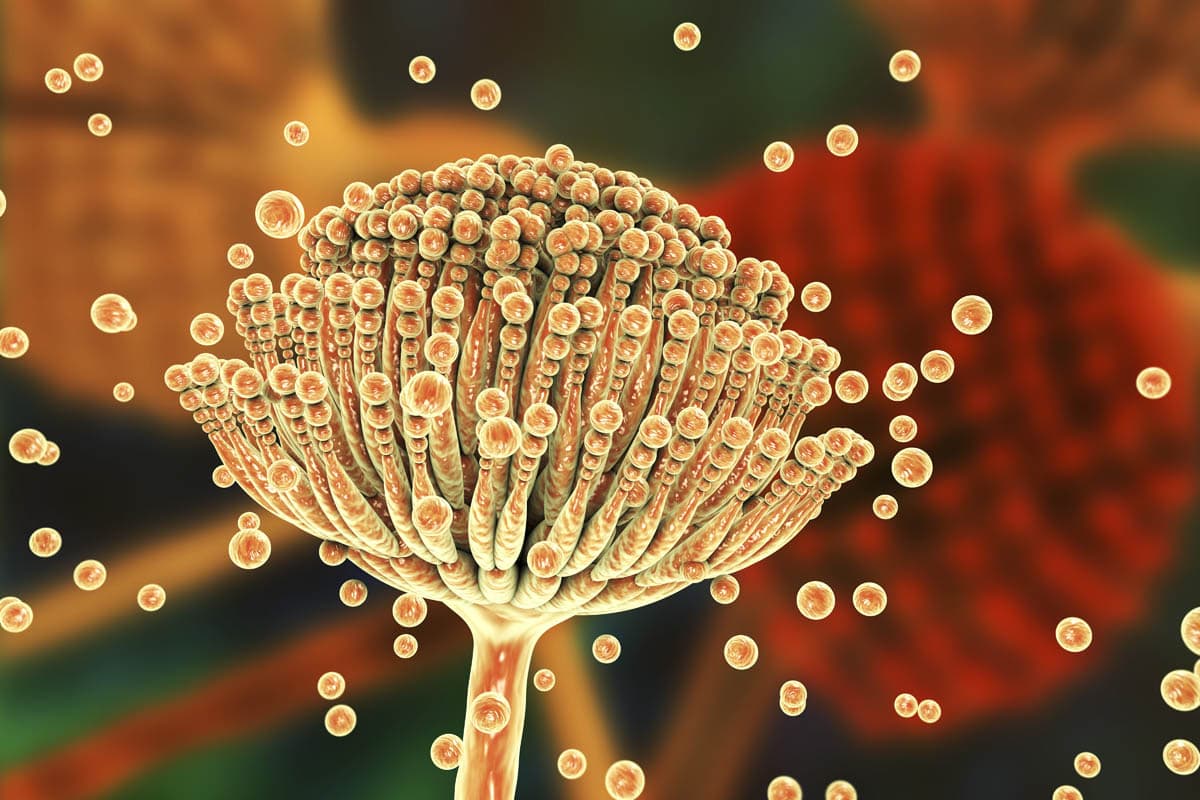What is aspergillosis?
Aspergillosis is a disease caused by fungi of the genus Aspergillus which is present on dead leaves, compost heaps, soil and the air. The fungus typically affects the nasal cavity, respiratory system or digestive tract of the cat and in some cases, the spores can also trigger an allergic reaction in the cat.
The most common types to affect cats are Aspergillus fumigatus and Aspergillus terreus.
Transmission
Aerosol: Cats become infected when they inhale the spores of the fungus. Exposure in most cats occurs without ill effects. The disease is opportunistic, which means it mostly affects immunodeficient animals. Cats with feline panleukopenia are especially vulnerable to developing an infection due to their weakened immune systems.
Symptoms
For most cats, infection is localised in the nose; however, some cases will move to the lungs. The most serious form, disseminated aspergillosis, occurs when the fungus spreads beyond the lungs and infects other organs in the body.
Common symptoms of aspergillosis include:
- Nasal discharge, which may be clear, thick or bloody
- Ulcerations on the outside of the nose
- Watery eyes (epiphora)
- Pain around the nose
- Sneezing
- Pneumonia
Disseminated aspergillosis:
Symptoms can vary depending on where in the body the fungus becomes established but may include:
- Loss of appetite
- Weight loss
- Fever
- Uveitis
Diagnosis
Your veterinarian will perform a complete physical examination of your cat and obtain a medical history from you.
Diagnostic workup:
- Rhinoscopy – A thin tube with a camera and light at the end is inserted into the nasal cavity to examine the inside of the nose for fungal plaques.
- X-rays or CT scans of the nasal passages and sinuses may reveal destruction of the bones.
- Serology – Blood tests to check for the presence of antibodies in the blood serum.
- Urinalysis – This will reveal fungal organisms in the urine if the cat has disseminated aspergillosis.
- Biopsy – A tissue sample can confirm the diagnosis of aspergillosis.
Treatment
Treatment is variable and depends on the immune competence of the cat and the location of the infection and may include:
- Systemic antifungal drugs such as itraconazole, fluconazole or posaconazole.
- Topical antifungal drugs involve giving the cat an anesthetic and inserting an antifungal medication into the nasal cavity through tubes.
- In some cases, surgery may be necessary to remove the infection.
- Cats may also run a concurrent bacterial infection which may require antibiotics.
The prognosis for cats with nasal aspergillosis is good, however, the prognosis for disseminated aspergillosis is poor.

